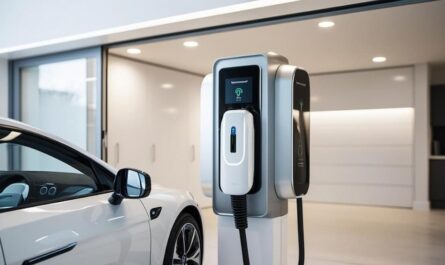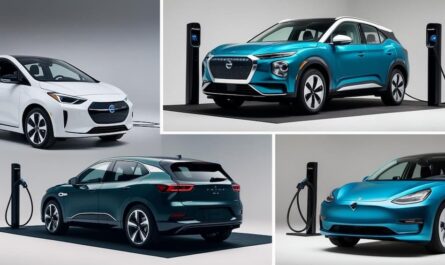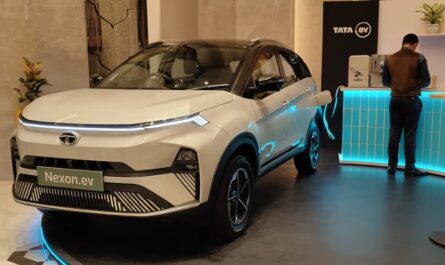India’s electric car charging stations have become a hot topic as the country pushes toward cleaner transportation. You might be wondering how accessible and convenient charging your electric vehicle (EV) really is across India today. Meanwhile, the rapid growth in EV sales demands a matching expansion in charging stations infrastructure, thereby making this a crucial area for both current and prospective EV owners to understand.
How is India’s electric car charging network?
You should know that India’s public EV charging infrastructure has grown remarkably fast in recent years. From just about 1,800 stations in 2022, the number soared to over 26,000 by early 2025, representing nearly a 15-fold increase in three years. This expansion is driven by government initiatives and private sector investments, aiming to reduce “range anxiety” – the fear of running out of battery without a nearby charging point.
With over 5,800 public charging stations, Karnataka takes the lead, ahead of Maharashtra and Delhi. The growth isn’t limited to cities; highways now feature thousands of chargers, enabling longer trips without worry. This means you can plan intercity travel with an EV more confidently than before.
Types of charging stations available in India
You might be curious about the kinds of chargers you’ll find. Generally, there are three main types. Slow chargers (AC), these are often found in residential areas or workplaces, suitable for overnight charging. Fast chargers (DC), located at public spots like malls or petrol stations, these can charge your car much quicker, often within an hour. Ultra fast chargers are emerging in select locations, these provide rapid top ups, ideal if you’re in a hurry.
The government’s recent guidelines promote interoperability among charging networks, so you can use different providers’ stations with a single app or card, thereby simplifying your charging experience.
Why charging infrastructure growth is important
If you’re considering switching to an electric car, the availability of charging stations directly affects your daily convenience and travel plans. Without adequate infrastructure, owning an EV can feel restrictive. But with over 10,000 new public charging stations added just in the fiscal year 2024-25, you can expect more options popping up near your home, workplace, or on highways.
In addition, the rise in the quantity of chargers contributes to shorter waiting periods and accommodates an expanding electric vehicle community, which surpassed 5.6 million vehicles in 2024. This growth means you’re less likely to face charging bottlenecks or long queues, making EV ownership more practical.
The expenses for charging differ based on the charger type and its location. Public fast chargers typically price electricity slightly higher than home rates but remain economical compared to petrol or diesel. You should also be aware that many charging stations are installed in partnership with private firms, petrol companies, and local governments, ensuring widespread access.
On the other hand, home charging setups require an upfront investment, but they offer the convenience of charging overnight at lower electricity tariffs. For many, this hybrid approach-using home chargers for daily needs and public stations for longer trips-works well.
Challenges in India’s electric car charging journey
Although there has been remarkable growth, the placement of charging stations remains irregular. States like Karnataka and Maharashtra are well-equipped, but others lag behind, which can limit EV adoption in those regions. You should also consider that many public chargers are concentrated in urban areas, leaving rural or remote areas underserved.
Another challenge is the lack of standardized payment systems across all networks, although recent government guidelines aim to address this by promoting interoperability and uniform protocols.
What to expect for EV charging in India
Looking ahead, the market is expected to grow at a compound annual growth rate (CAGR) of over 22% through 2034, reaching nearly 9.5 million charging units. This means the infrastructure will become denser and more sophisticated, with smart charging solutions and integration with renewable energy sources on the horizon.
Private players like CHARGE ZONE, Tata Power, and BPCL are aggressively expanding their networks, while states continue to roll out supportive policies. You can expect the charging experience to become smoother, faster, and more accessible.
Take for example, Karnataka’s early adoption of EV friendly policies since 2017 has paid off handsomely. With more public charging stations than any other state, Bengaluru itself is home to upwards of 4,200 chargers. This infrastructure supports a thriving gig economy of delivery and courier services using electric cars, demonstrating how targeted infrastructure investment can boost EV adoption.
The state’s public private partnerships have enabled the installation of thousands of chargers in public parking lots, metro stations, and along highways. This model shows how collaboration can overcome infrastructure gaps, making electric cars a practical choice for many users in India.
What to keep in mind when using electric car charging stations
When you use public chargers, it’s important to plan your trips considering charger locations and types. Apps like CHARGE ZONE help you find nearby stations, check availability, and even book slots, thereby saving time and hassle. Also, be mindful of peak hours when chargers might be busy.
You should also stay informed about the latest government schemes and incentives that might reduce your charging costs or help set up home chargers.
For more information on home EV chargers check out this post on: Universal electric car charger for home.
While challenges remain, the expanding network, especially in leading states like Karnataka and Maharashtra, means you can increasingly rely on public chargers for everyday and long distance travel.



